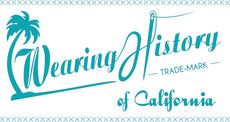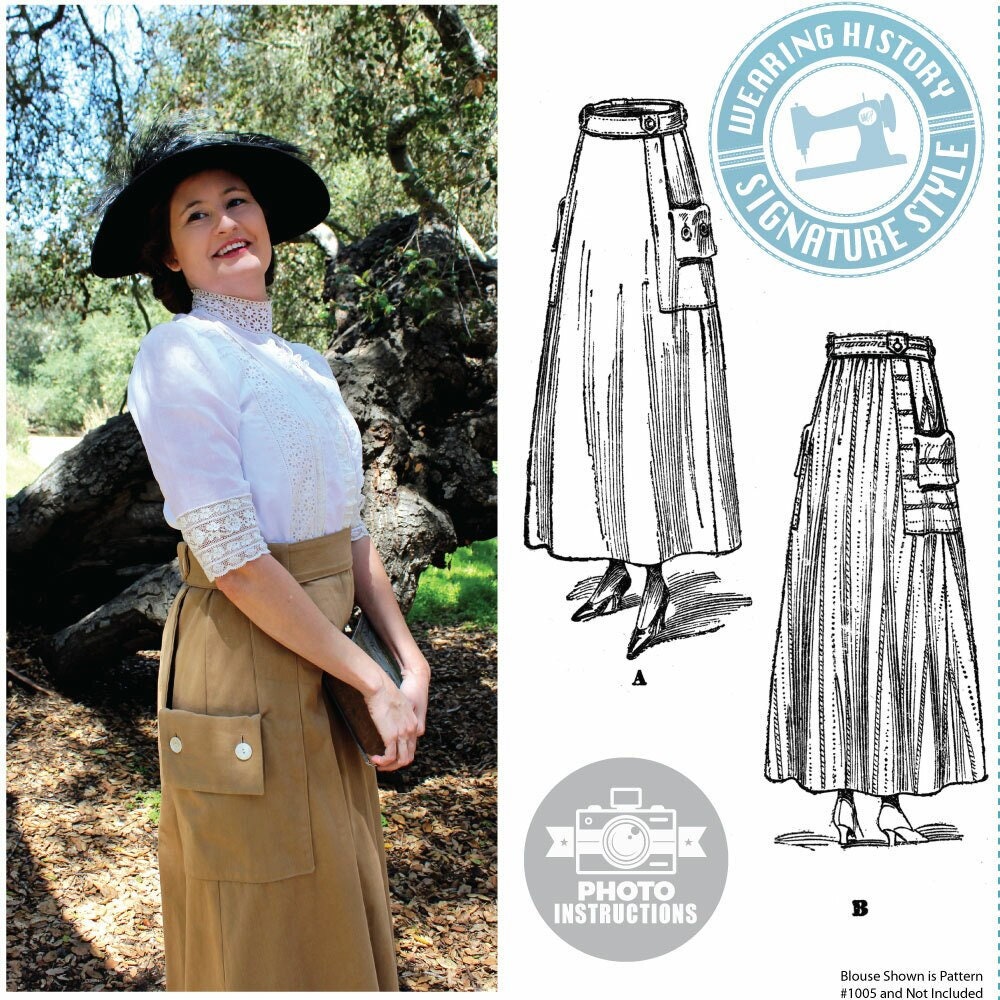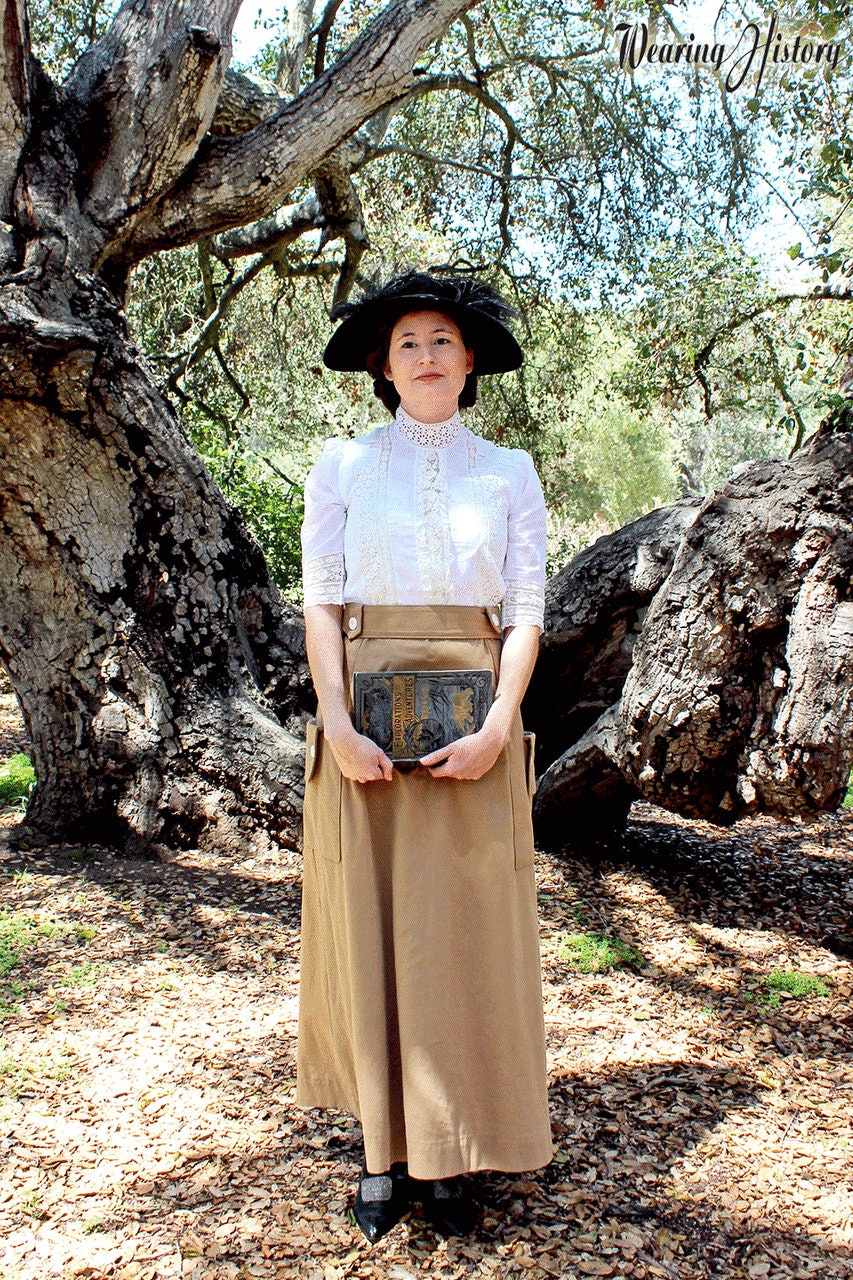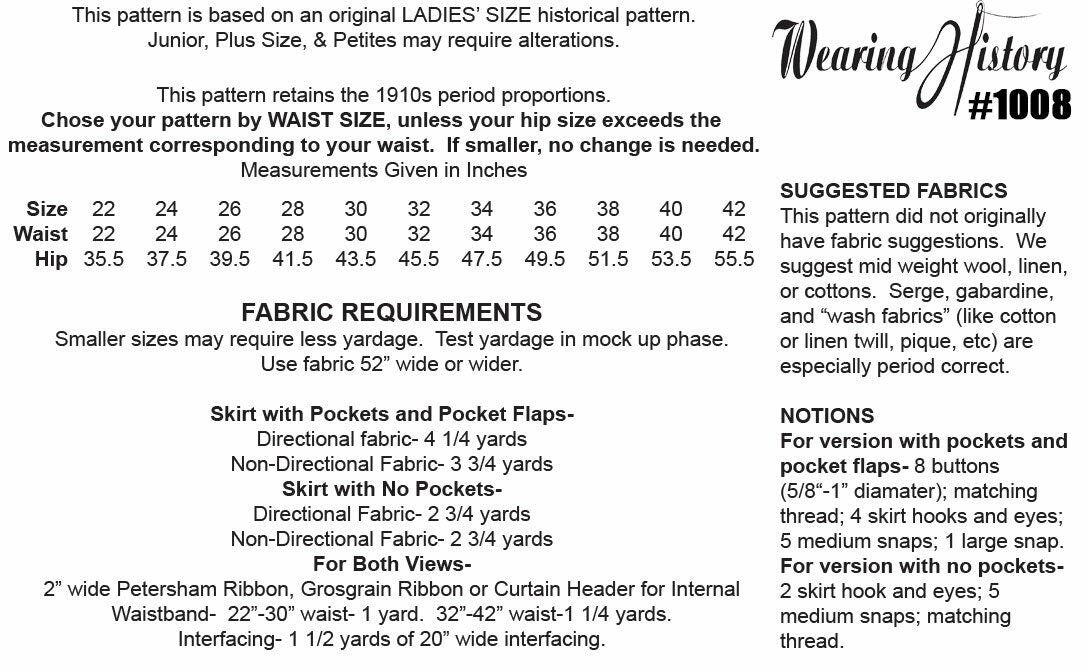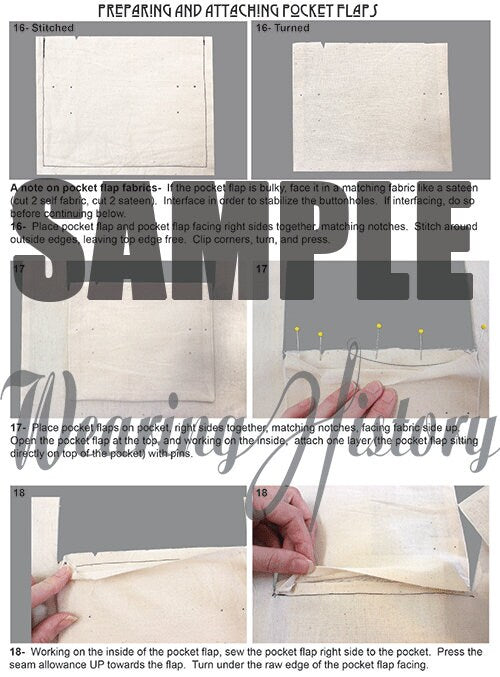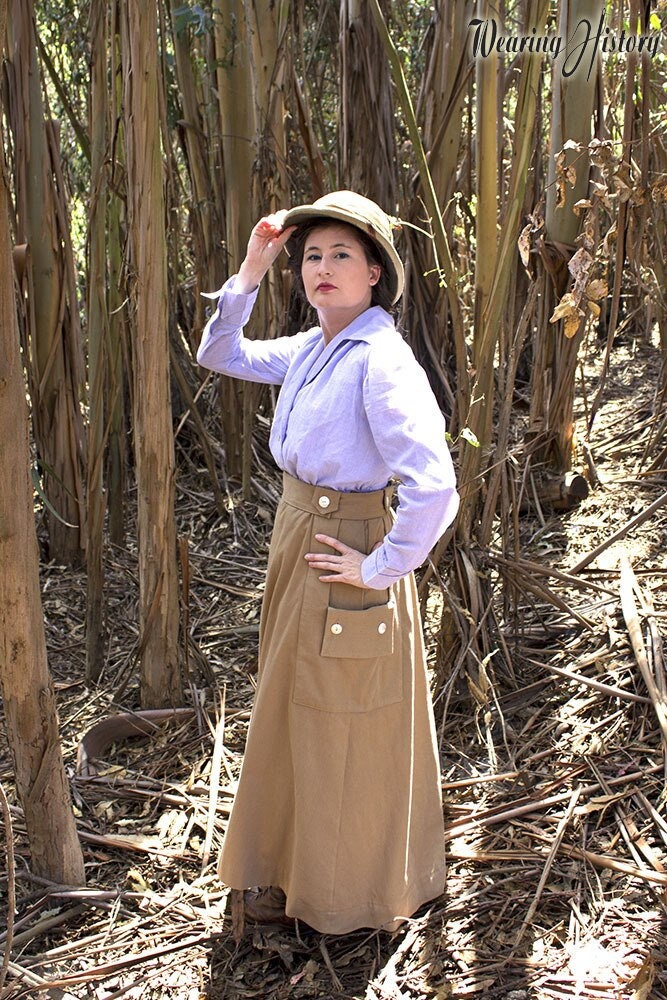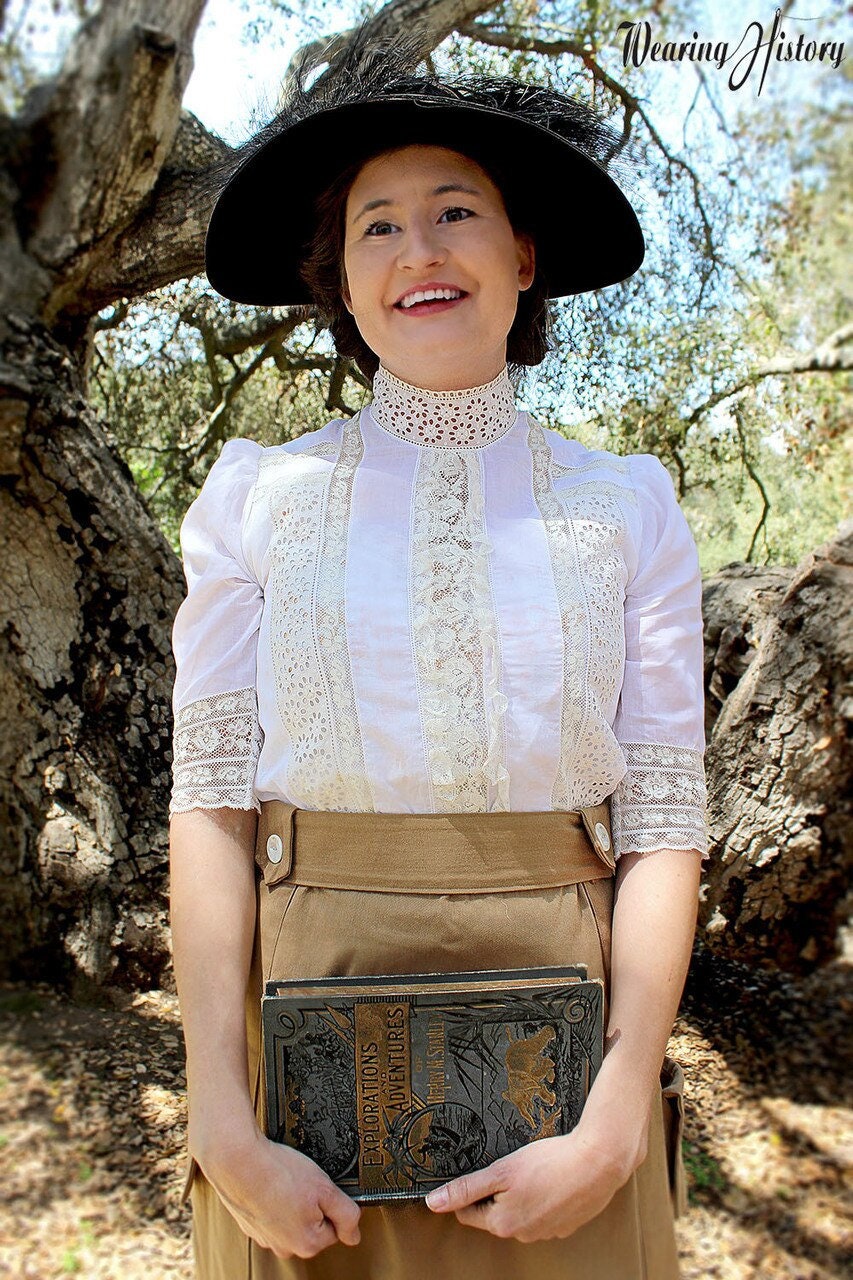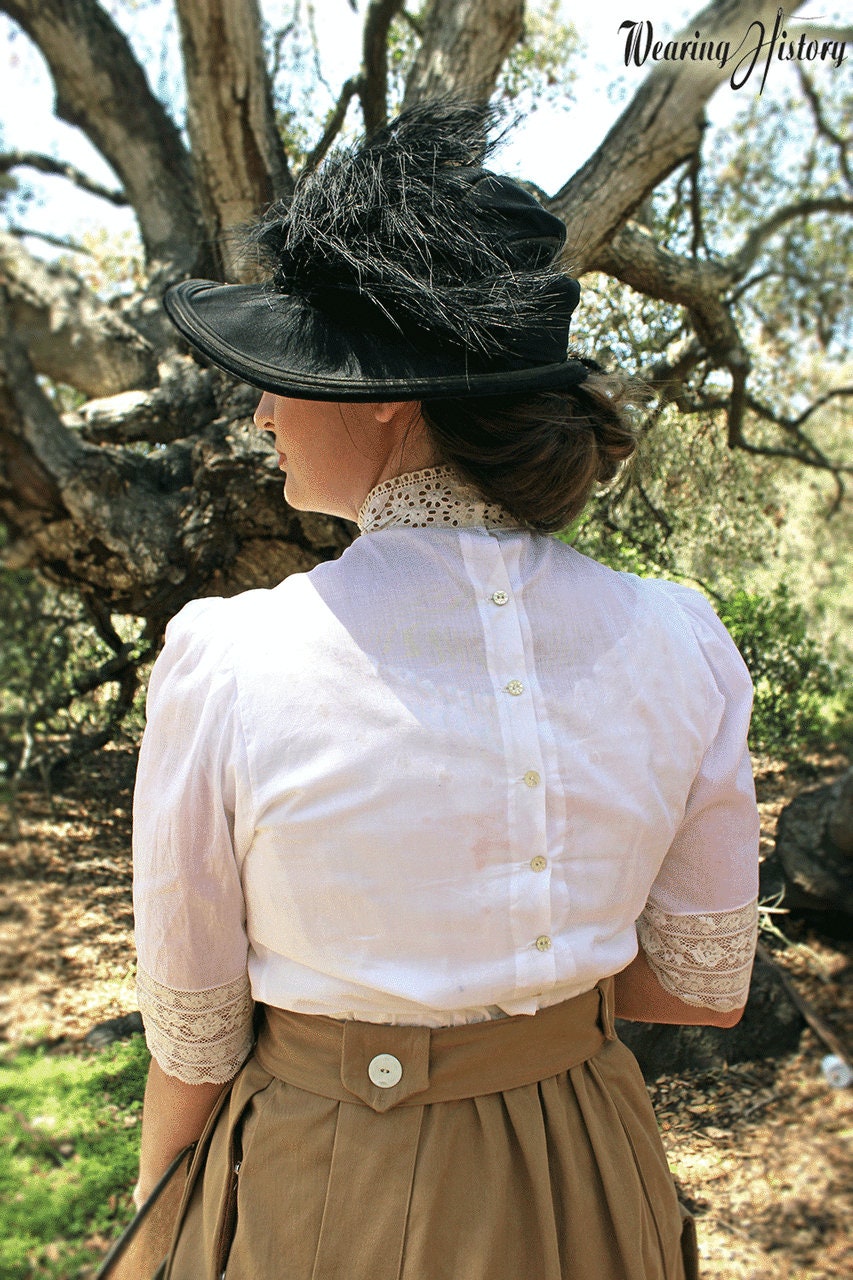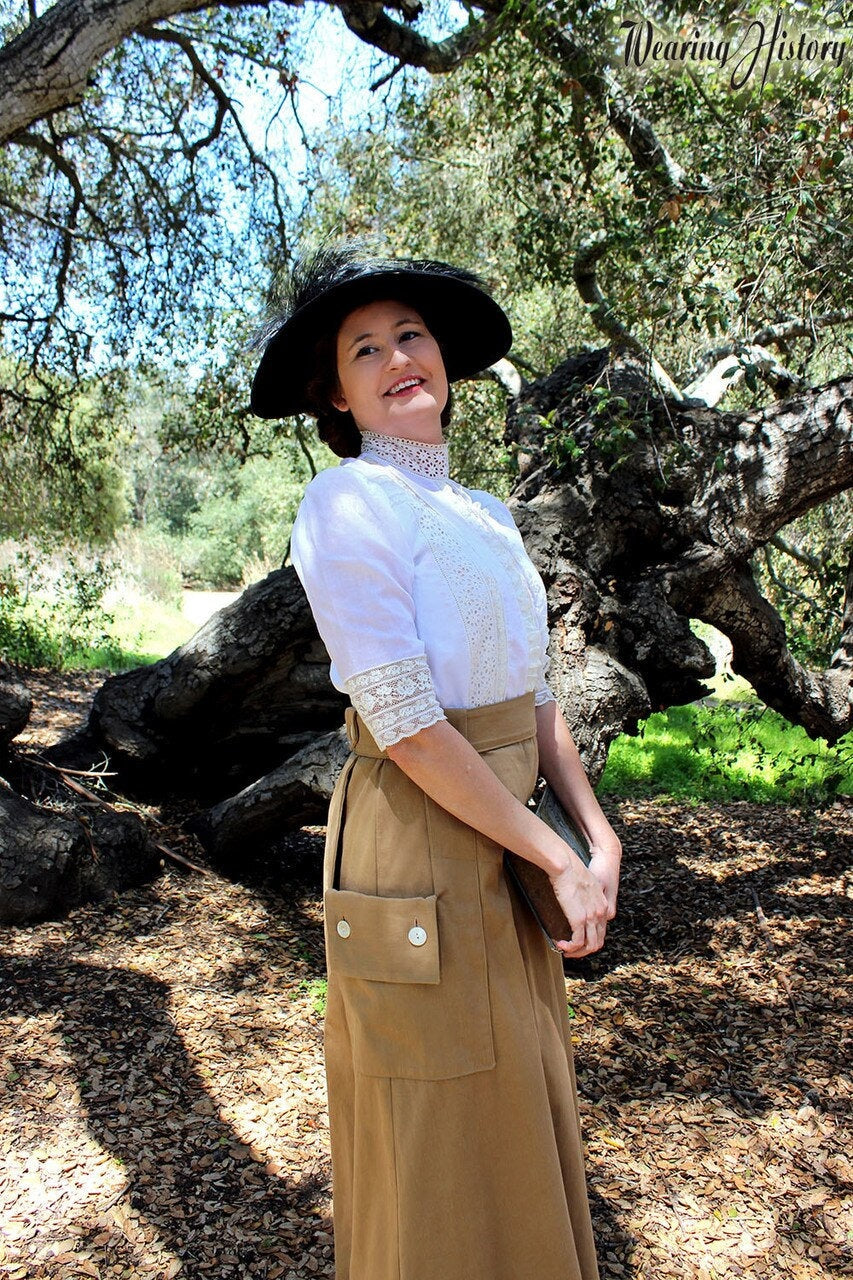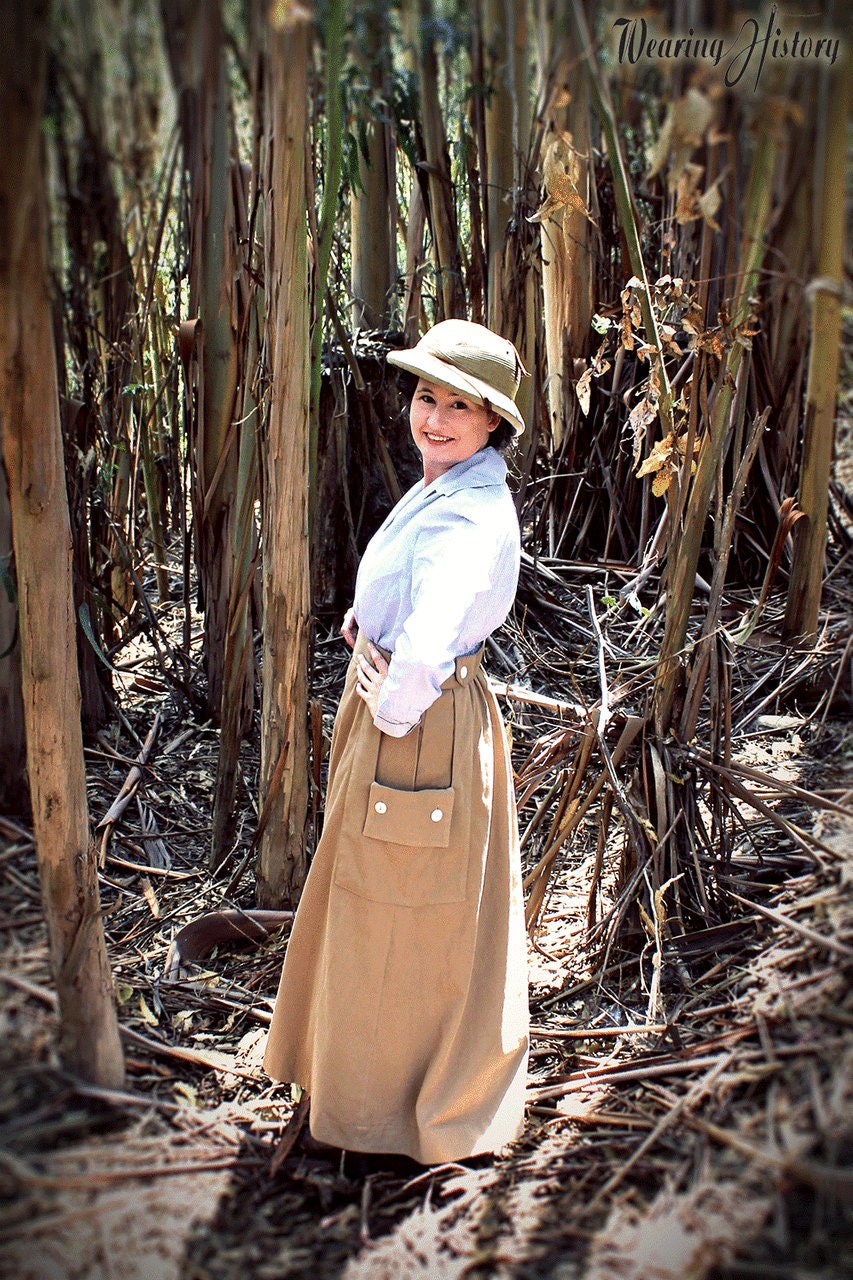wearinghistory
PRINTED PATTERN- Evelyn- Circa 1917 Skirt Pattern with Pockets- Wearing History
Couldn't load pickup availability
This is for PRINTED PATTERN- Mailed to you. E-Pattern download is available in a separate listing in my store.
Introducing Evelyn! Our first pattern with photo instructions!
Evelyn is a beautiful 1910s era skirt that can be made with or without pockets. This skirt hits two inches above the natural waist and falls from the top of an internal fitted waistband. The skirt fastens at the side with hooks and eyes and snaps. The pocket version of the skirt has fold down tabs that attach to a belt. The back of the skirt is gathered. When made without pockets, this works exceptionally well with suit jackets. When paired with a blouse in matching fabric, it makes a wonderful skirt for a two-piece dress.
This pattern is a Wearing History Signature Styles pattern. It was based on an original 1917 sewing pattern, and includes not only the original period sewing instructions, but also modern step-by-step photo instructions and cutting charts for modern fabric widths. This pattern also includes notes about this pattern from Delineator magazines of 1917.
Informative videos about this pattern are coming soon!
Our printed pattern version of this pattern is printed on gorgeous bond paper with color cutting lines. The printed version also includes instructions with a comb bound pattern booklet.
Evelyn is shown with the Elsie blouse pattern in our adventure look, and with the 1910s Blouse and Guimpe pattern for the traditional 1910s look. Blouse patterns sold separately. Pair this with our 1916 Suit Pattern for even more 1910s looks!
This pattern is a great option for steampunk, historical, or modern wear!
- Difficulty -
This pattern is estimated to be an Intermediate pattern difficulty, but adventurous beginner sewers may be able to construct this with a little patience. Our photo instructions make this skirt pattern quite user-friendly!
-Size Information and Yardage Requirements-
-Additional Notes-
Because this was based on a period original from an era in which women wore corsets, a mock up is HIGHLY SUGGESTED. Test construction and fit on your unique figure before cutting into your fashion fabric.
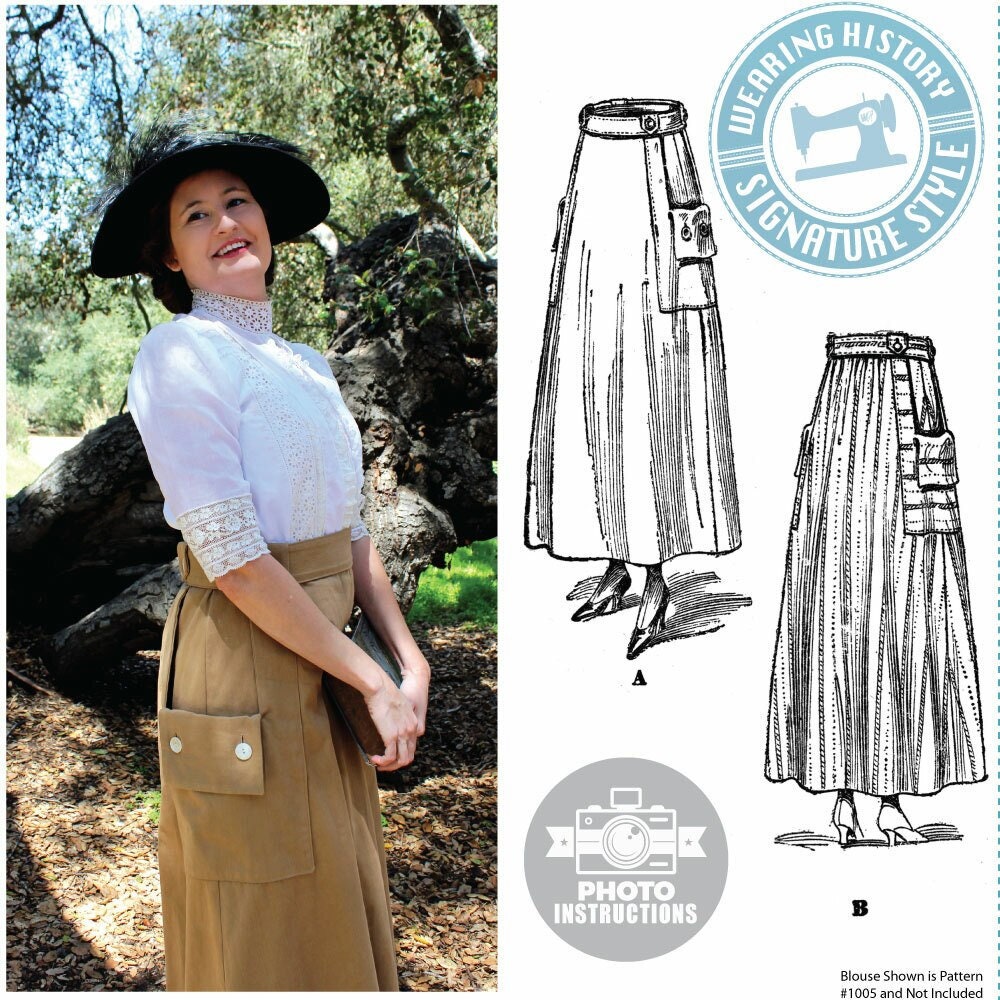
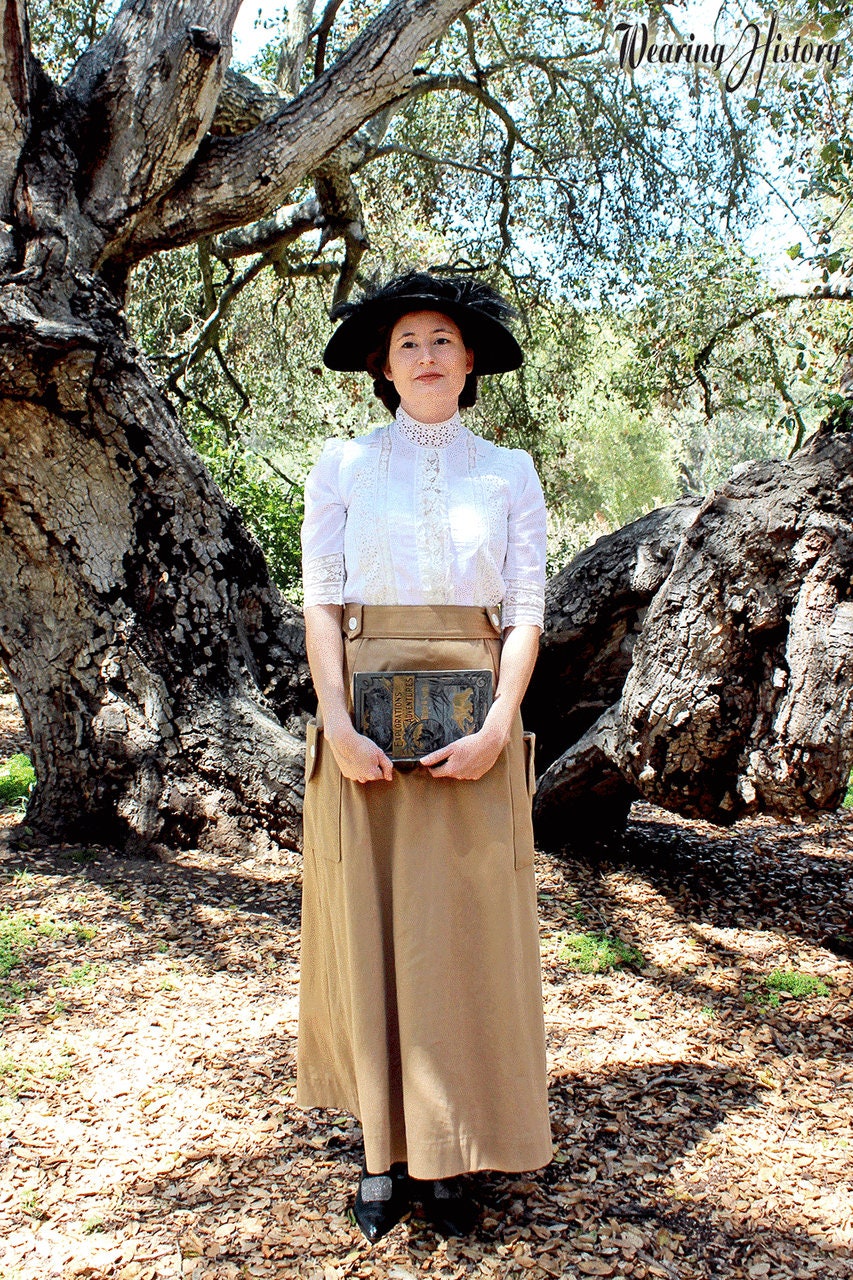
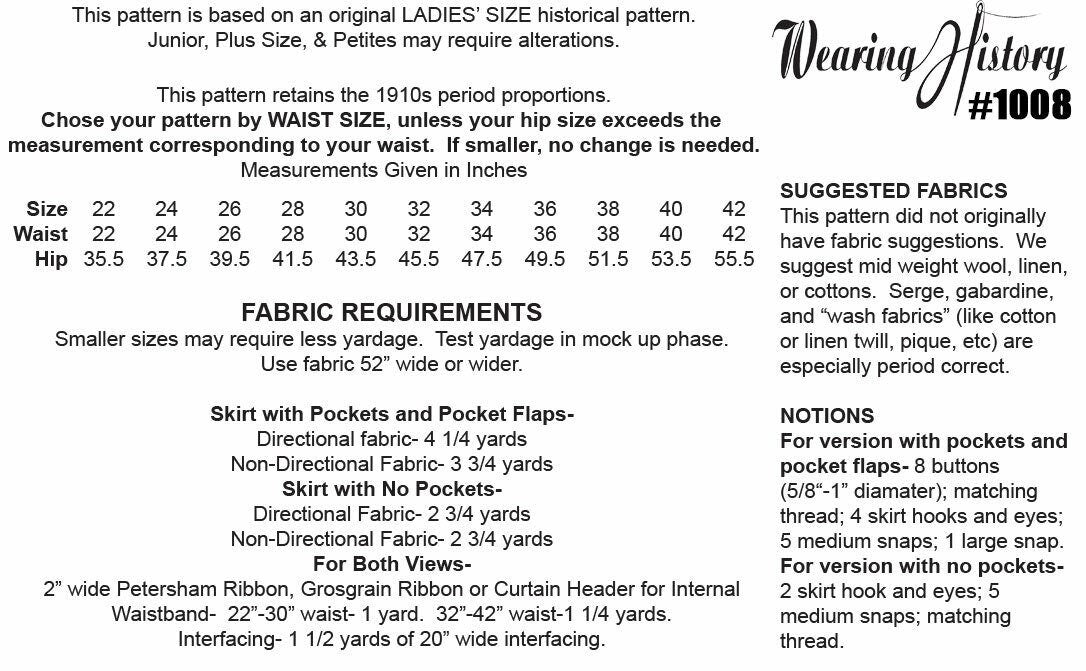
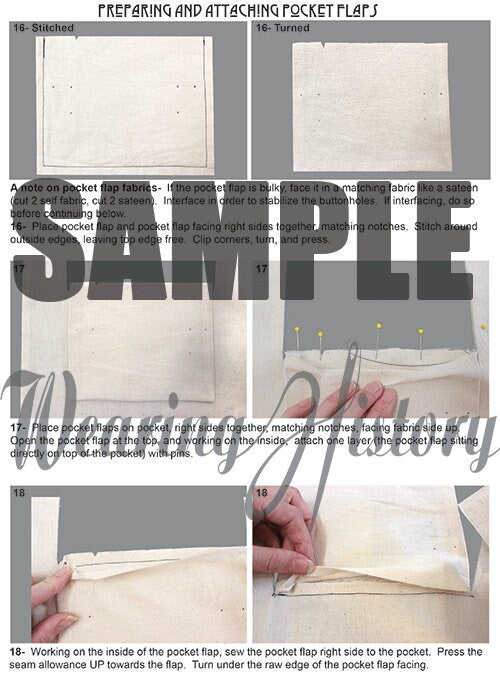
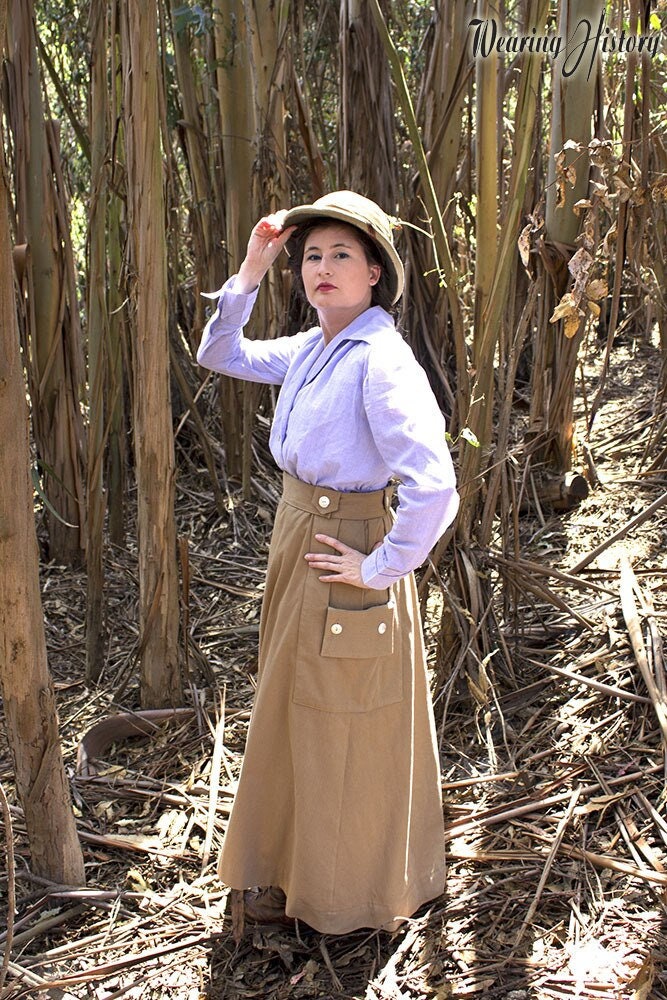
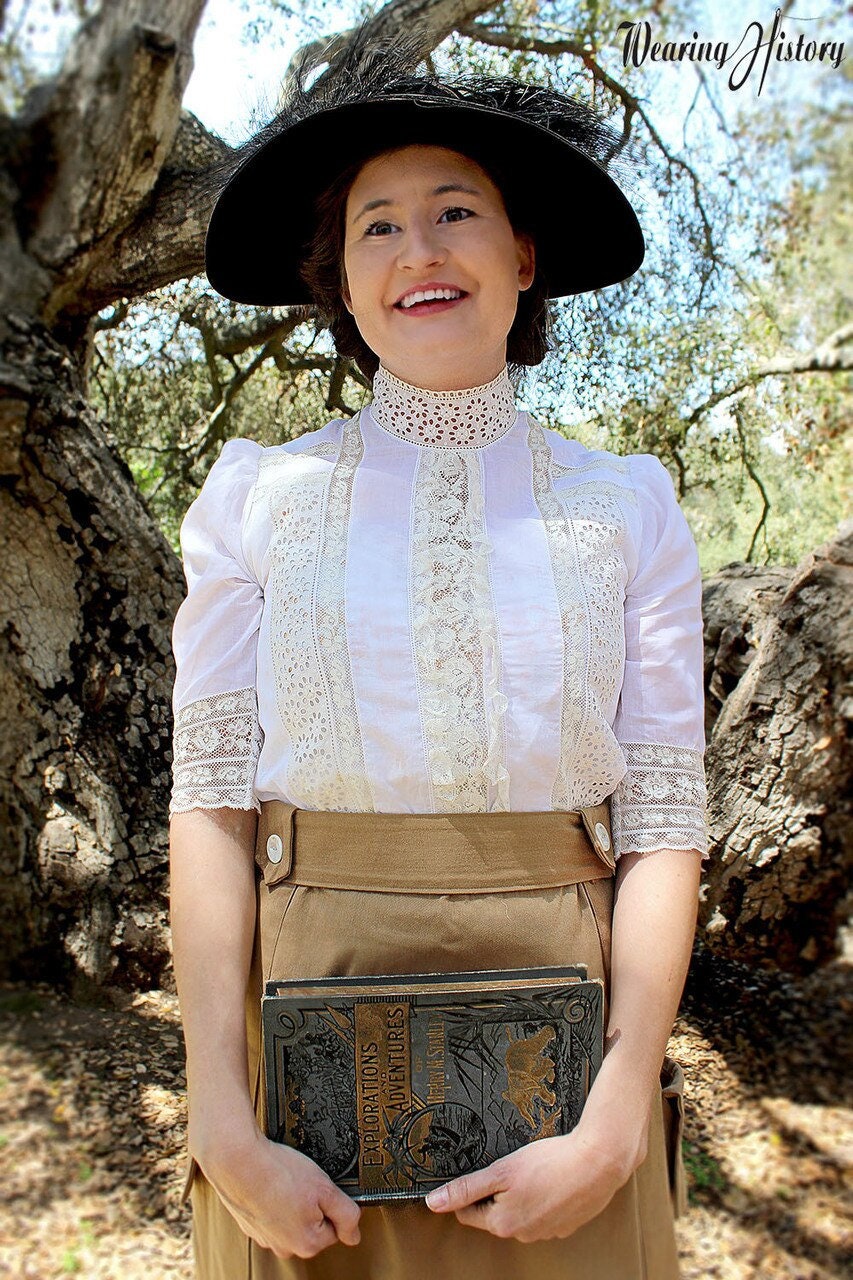
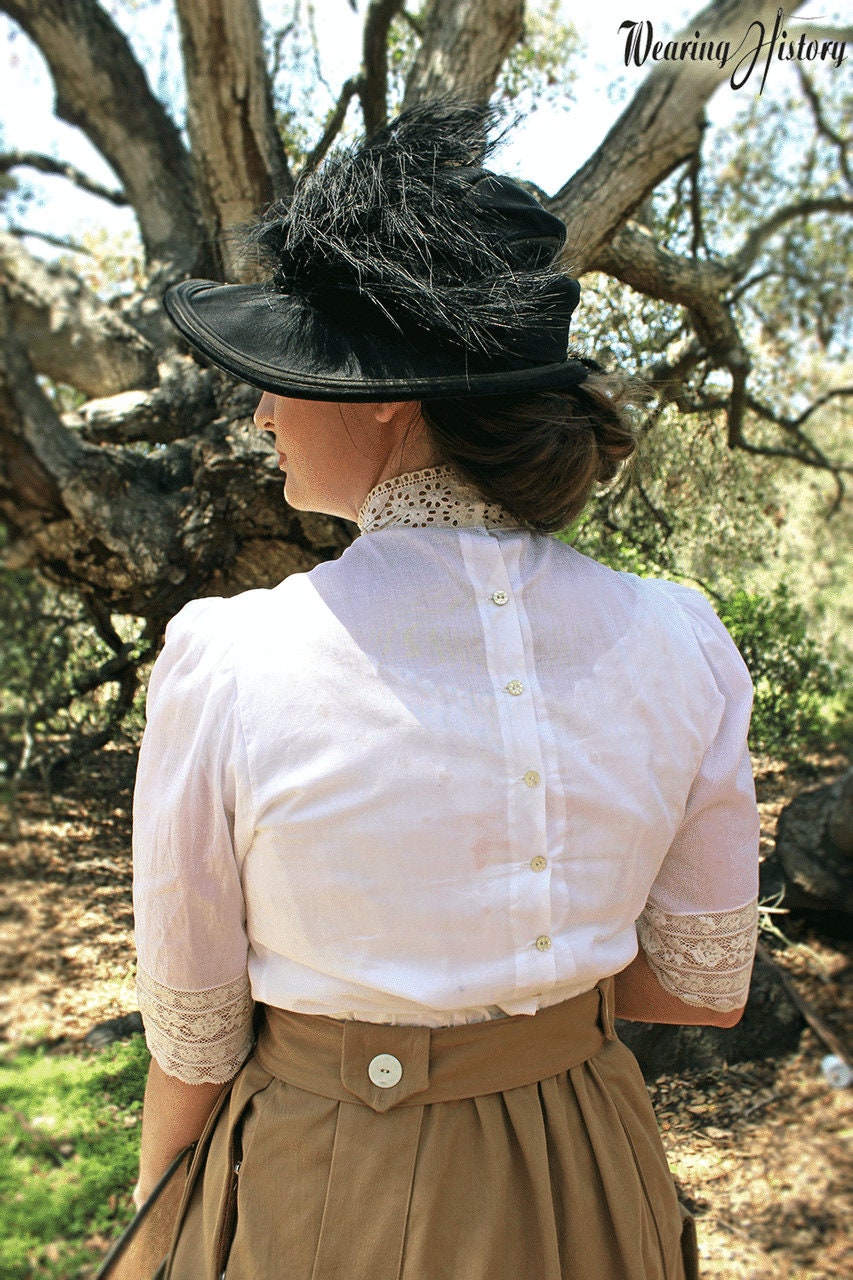
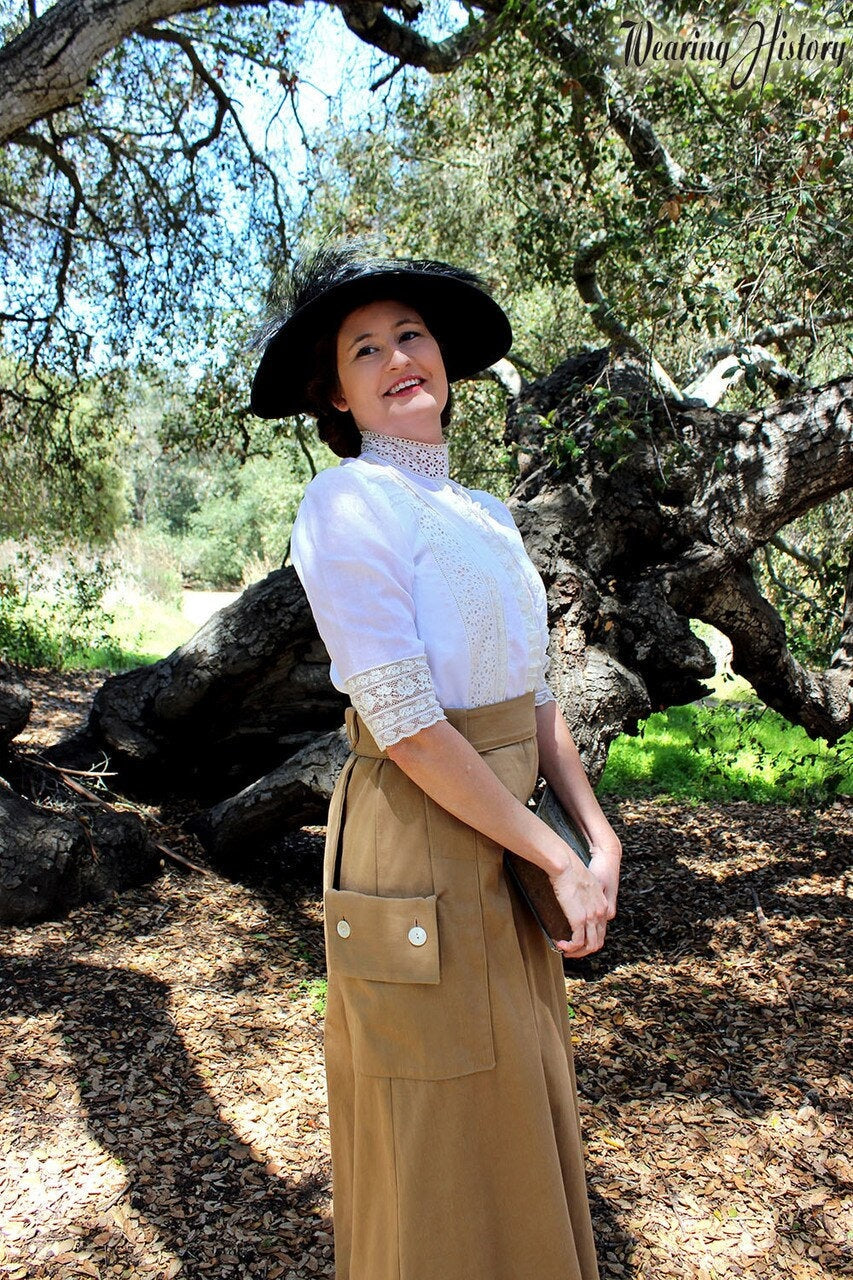
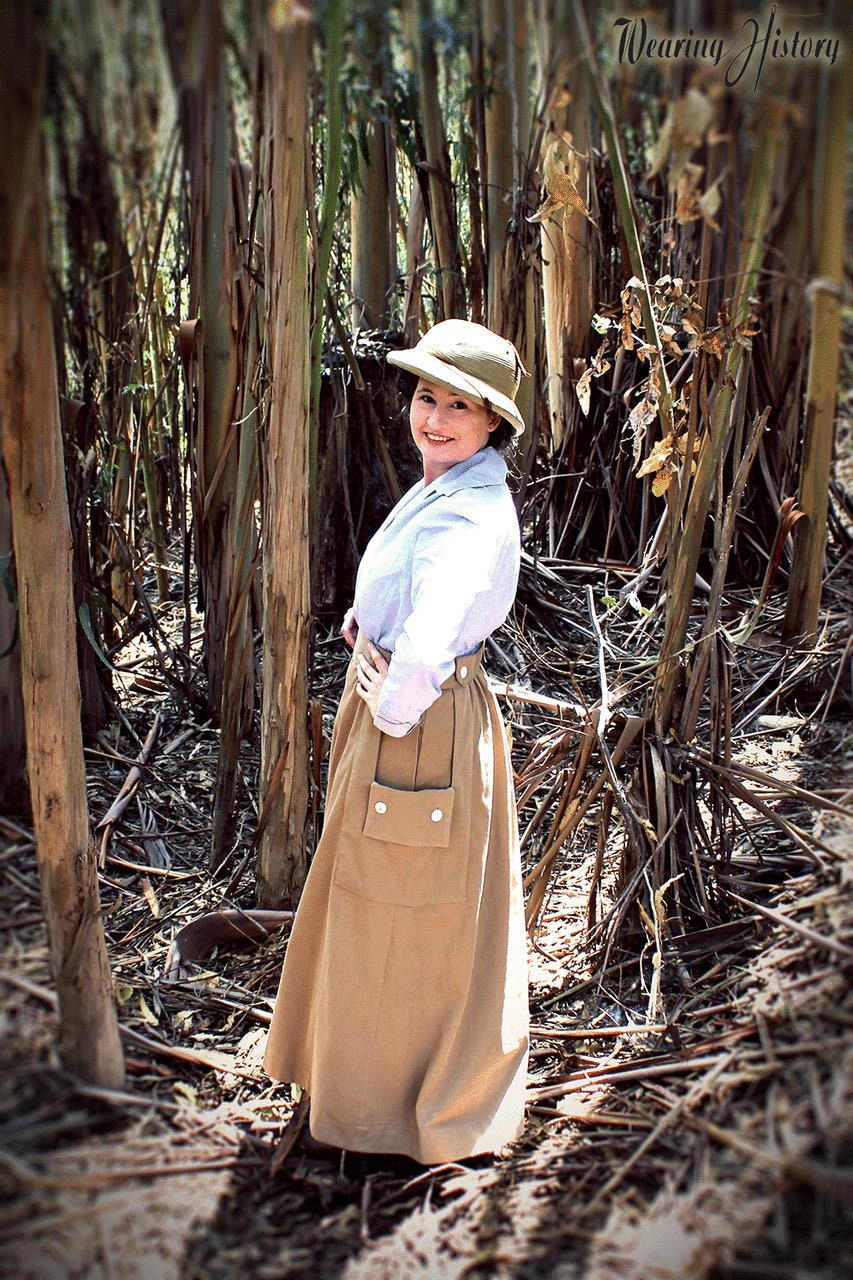
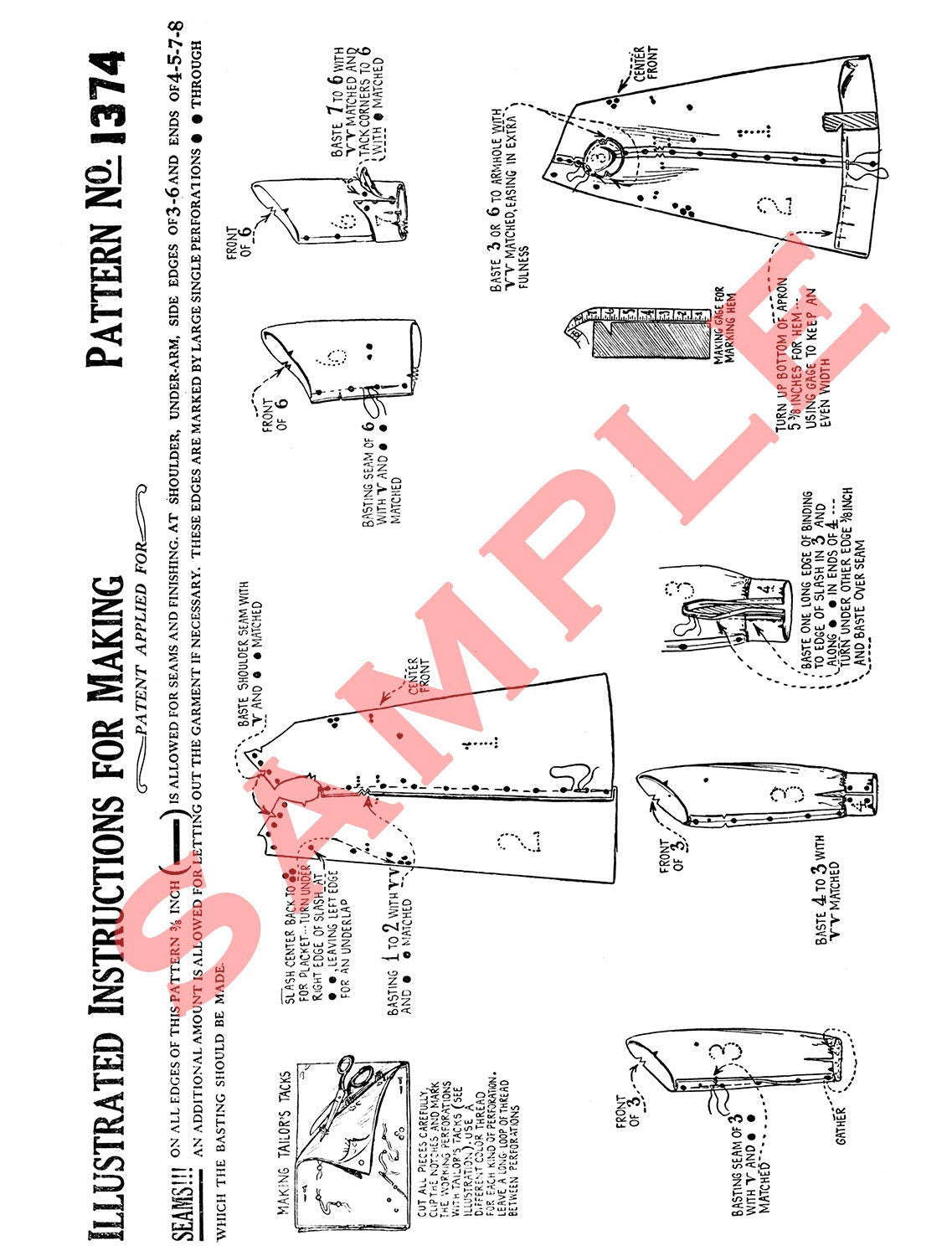
-
Shipping
PRINTED PATTERNS are mailed to you and already printed on big paper. Shipping is calculated at checkout. Please allow up to one week for orders to ship.
E-PATTERNS and E-BOOKS are digital download PDF files you save and print yourself or have printed for you. These will not mail to you. You download them yourself to your computer after checkout.
We do not sell to the EU or the UK on this site, as we aren’t set up for VAT collection. Please shop on Etsy if you’re in those countries. Http://wearinghistory.Etsy.com
-
HOW TO USE E-PATTERNS
Most patterns come as both A4/US LETTER and A0 size. You will need ADOBE READER, a free program, to print your e-pattern.
For A4/US LETTER paper:
Open the "READ-ME-FIRST" File for instructions on printing and piecing your pattern. Print the PDF file on your home printer, cut off on the lines given, and tape them together. Then you cut and use your pattern just as you would a normal home sewing pattern.
For A0 size:
This is sent away to a copyshop and printed on big sheets for you. We print A0 pattern sheets at great prices at Pattern Printing Company
-
Returns
No returns or exchanges are accepted. Please be sure of your pattern size and type of product, either physical or digital, before purchasing.
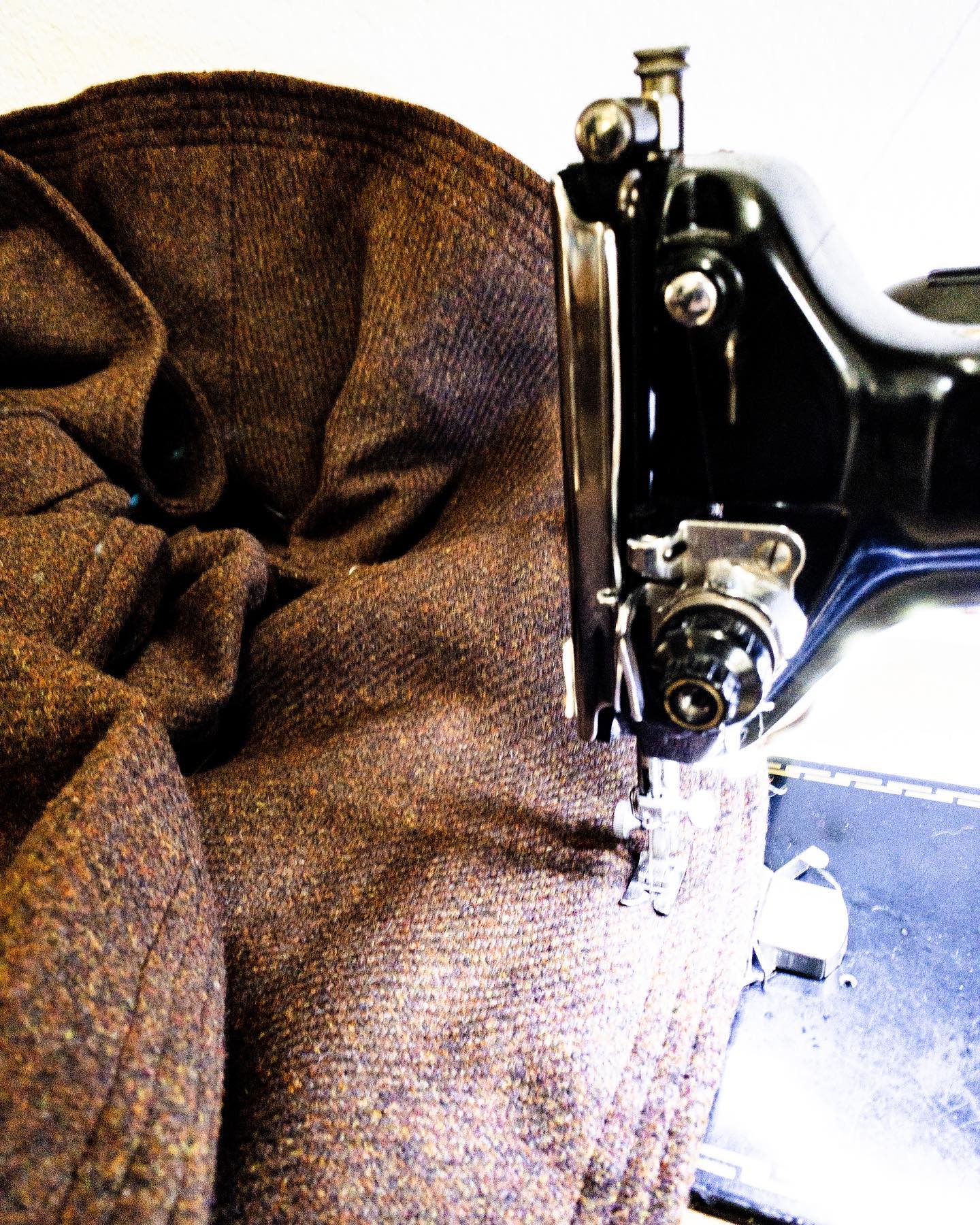
Carefully Researched
All of our patterns are carefully researched and based on either public domain materials or our own creations. Lauren applies her decades worth of practical application of historical fashion and technical skills when making these patterns, and often supplies watch points for making. External helps are available on Wearing History on YouTube and on Wearing History Blog to help you learn to sew history.
